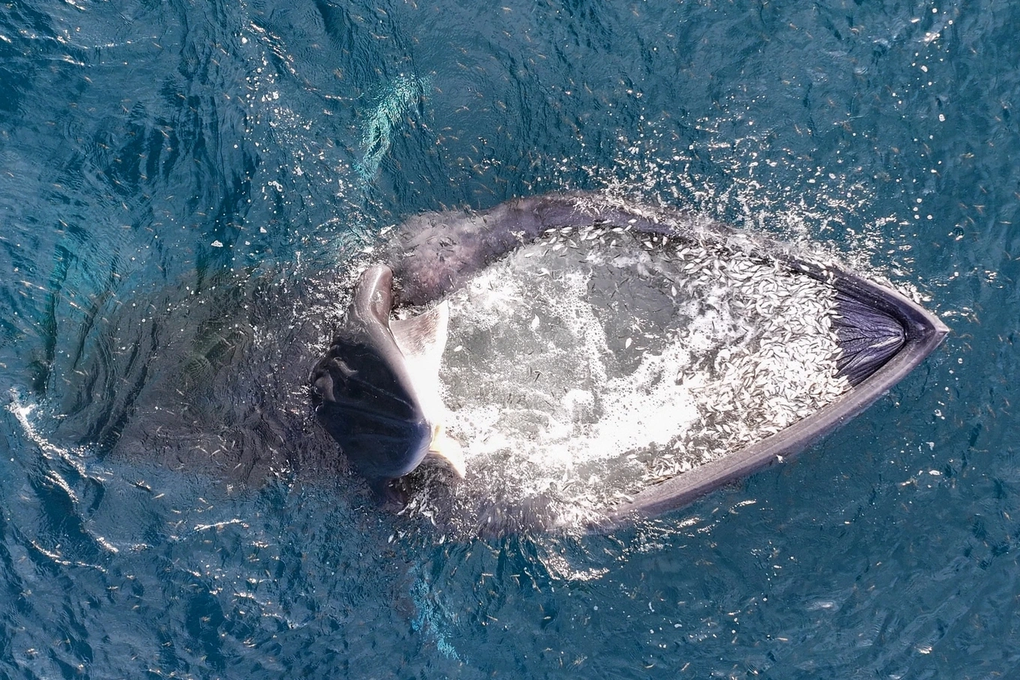
Whales appear in the waters of Gia Lai province (Photo: Nguyen Dung).
In early July, Gia Lai province's sea continuously recorded the appearance of large whales swimming close to shore, in the sea areas of Hon Kho, Vung Boi, and De Gi.
Since 2022, Bryde's whales have appeared many times in the coastal waters of Binh Dinh (before the merger) including Vung Boi (Phu My), Hon Seo (Quy Nhon) and Mui Ganh (Hoai Nhon).
According to the Center for Biodiversity Conservation and Endangered Species (CBES), these whales are named Bryde's, and belong to the species Balaenoptera edeni. This is one of the rare marine animals.
We can distinguish Bryde's whales from other species by their elongated, smoky blue-gray body and three long ridges on the top of their heads.
A filter feeder, the Bryde's whale has 40-70 folds in its throat that help expand its mouth cavity, along with 250-410 baleen plates used to filter food from seawater.
According to NOAA Fisheries, the fish was named after Johan Bryde, a Norwegian who established the first whaling stations in South Africa in the early 20th century.
Bryde's whales spend most of their day at depths of about 15 metres below the surface of the ocean, and need to eat about 600kg of food a day to meet their nutritional needs, a study has found.
Bryde's whales are found in most of the world's oceans. However, because they prefer waters with temperatures of 16 degrees Celsius or higher, they usually move in tropical, subtropical and warm temperate regions.
Some populations of Bryde's whales choose to stay in one area so long that they are considered “resident,” while other populations of the same species are migratory, leaving the equator in the summer and returning in the winter.
Currently, taxonomists have not yet agreed on how to classify Bryde's whales. They may include two or three closely related species, or even more, but they are difficult to distinguish by common external characteristics.
In 2021, a population in the Gulf of Mexico was split into a new species, Balaenoptera ricei. All three are very similar, difficult to distinguish with the naked eye.
Source: https://dantri.com.vn/khoa-hoc/ca-voi-xuat-hien-o-gia-lai-su-tro-lai-theo-mua-hay-da-dinh-cu-tu-truoc-20250710141619620.htm



![[Photo] General Secretary To Lam presents the 45-year Party membership badge to comrade Phan Dinh Trac](https://vphoto.vietnam.vn/thumb/1200x675/vietnam/resource/IMAGE/2025/8/28/e2f08c400e504e38ac694bc6142ac331)


![[Photo] Prime Minister Pham Minh Chinh meets with Speaker of the New Zealand Parliament Gerry Brownlee](https://vphoto.vietnam.vn/thumb/1200x675/vietnam/resource/IMAGE/2025/8/28/cec2630220ec49efbb04030e664995db)
![[Photo] Red flag with yellow star flutters in France on National Day September 2](https://vphoto.vietnam.vn/thumb/1200x675/vietnam/resource/IMAGE/2025/8/28/f6fc12215220488bb859230b86b9cc12)
![[Photo] Politburo works with the Standing Committee of Cao Bang Provincial Party Committee and Hue City Party Committee](https://vphoto.vietnam.vn/thumb/1200x675/vietnam/resource/IMAGE/2025/8/28/fee8a847b1ff45188749eb0299c512b2)
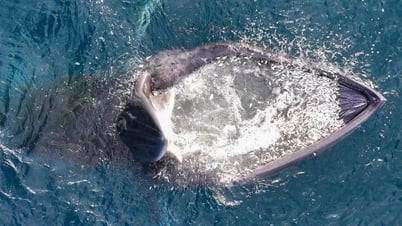




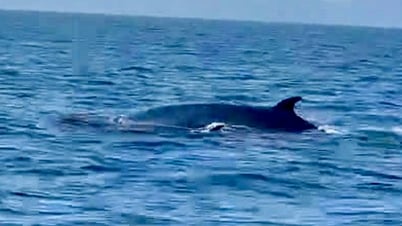

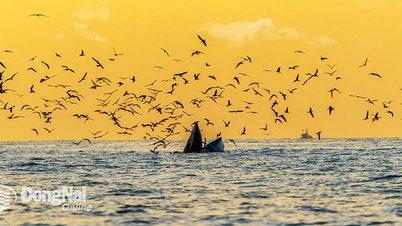















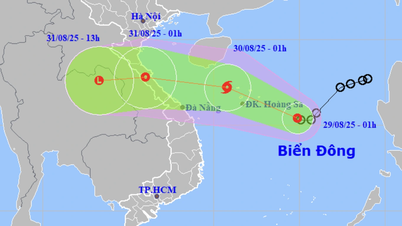

















































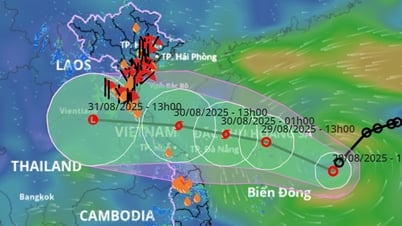
























Comment (0)